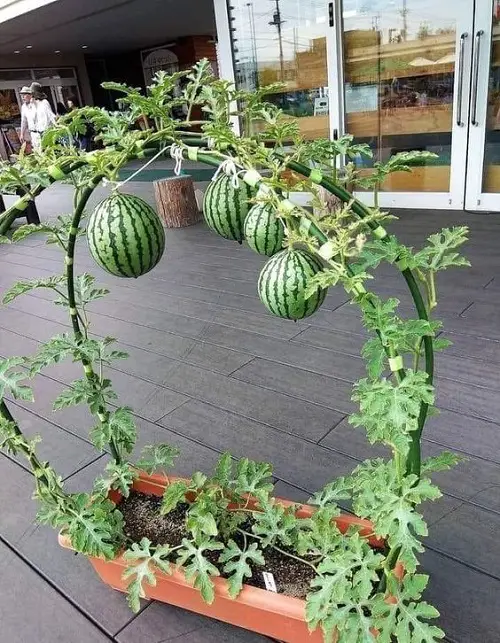There are Fruits that Grow on Vines and Climbers, and you can train them for vertical growth to utilize space in your small garden.
Is the lack of space stopping you from growing fruits in your garden? We have compiled a List of Fruits that Grow on Vines and will easily thrive around your yard fences, arbors, or pergolas. Some will even thrive in pots and can be trained on small trellises.
Fruits That Grow on Vines
1. Kiwi
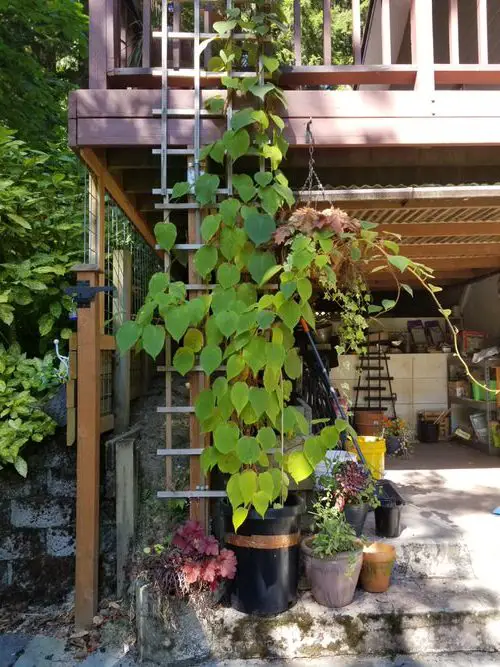
Botanical Name: Actinidia deliciosa
Kiwis grow on perennial vines that can be 14-18 feet in length with a span of 12-16 feet. They thrive best on pergolas or tall trellis, where they can bask all day in the sun.
2. Armenian Cucumber

Botanical Name: Cucumis melo var. flexuosus
Armenian cucumbers or any cucumbers can be trained vertically in garden stakes or smaller trellises. The plant needs a warm ambiance and a well-drained, fertile medium to produce juicy cucumbers. You can easily grow these in pots!
3. Grapes

Botanical Name: Vitis
Grapevines are a treat to the eyes for their lush foliage and clustered hanging fruits. The vines spread rapidly and need regular pruning to grow on arbors and pergolas in the sunny garden corners.
4. Passionfruit
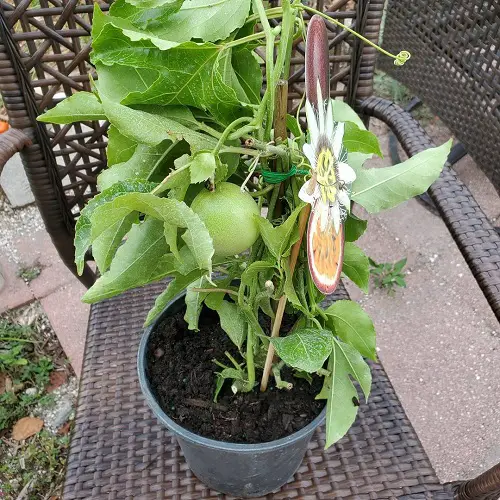
Botanical Name: Passiflora edulis
Exotic fruit with a sweet tarty flavor that grows on tall vines spreading 15 to 30 feet long. The plant needs high structures or trees around to thrive well.
5. Dragon fruit
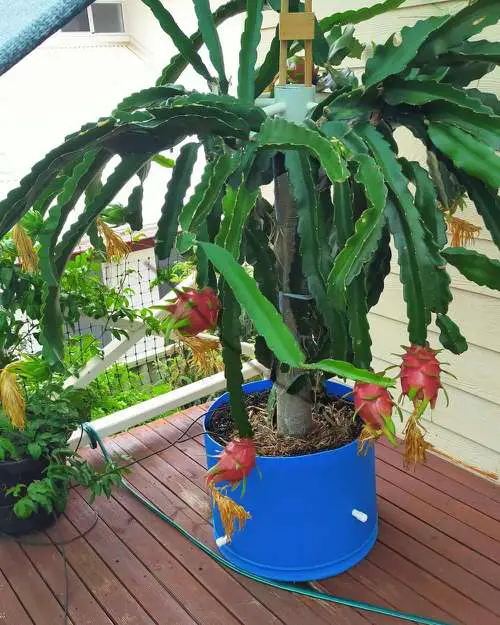
Botanical Name: Hylocereus undatus
Dragon fruits are purple scaly fruits that grow on ornamental, succulent vines that can be up to 20 feet in size. Once established, the plant keeps producing fruits for the next 20-30 years.
6. Gooseberry
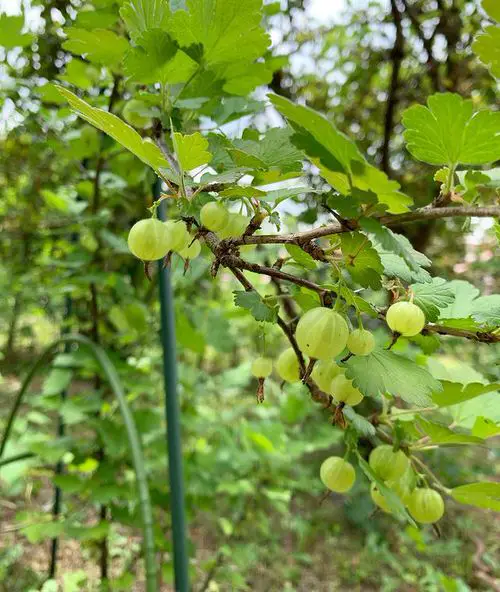
Botanical Name: Ribes uva-crispa
These power-packed sweet-tart fruits grow on 3-4 feet tall vines in rich-well-draining soil. Train the plant on garden fences or walls to provide the necessary support. We also added them in our list of best fruits to grow in containers.
7. Mouse Watermelon
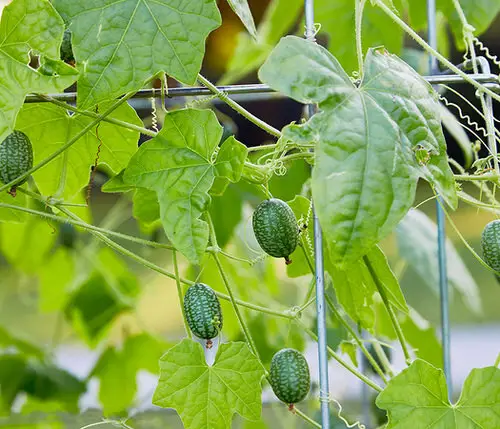
Botanical Name: Melothria scabra
Mouse Watermelons resemble tiny watermelons but taste like cucumbers. They thrive in full sun and bear delicate stems; hence can be trained along long trellis and garden fences.
8. Honeydew Melon
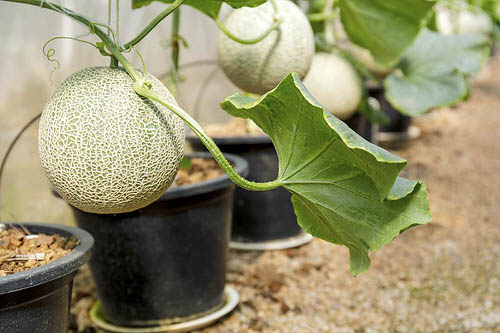
Botanical Name: Cucumis melo L.
The oval, whitish-green fruits grow on creeping vines and rank among the tastiest fruits available. The vines need good support to resist the weight of fully-developed melons.
9. Watermelon
Botanical Name: Citrullus lanatus
Watermelons are warm-weather seasonal fruits that need 6-7 hours of direct sunlight. The vines grow nearly 6-8 feet long and need sturdy support to hold the heavy fruits, if you decide to grow them vertically.
10. Blackberry
Botanical Name: Rubus fruticosus
Blackberries are juicy tarty fruits that grow on a thorny shrub that behaves more like a short climber rather than a vine. A 5 to 6 feet trellis would work well to support this nutritious fruit. It is actually a shrub but also trails like a vine!
11. Muskmelon

Botanical Name: Cucumis melo
Muskmelons are a species of melons that need a strong trellis to vine vertically. Each melon needs to be supported with a cloth or jute bag to hold it upright.
12. Hops
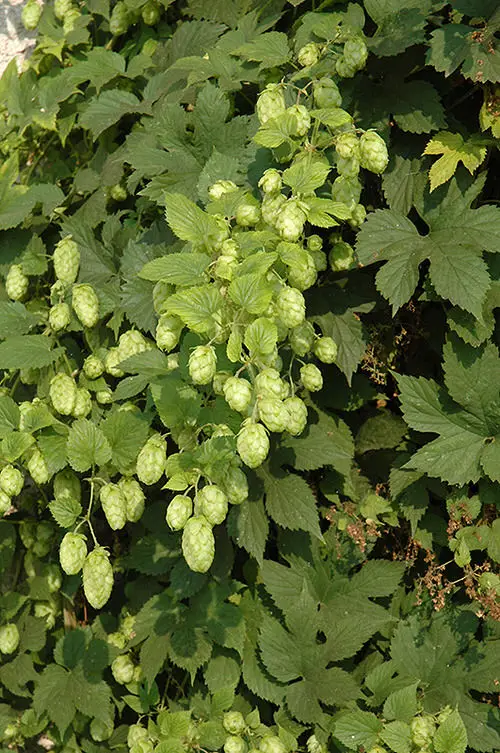
Botanical Name: Humulus lupulus
A rare vining variety for those in warm climates, hops grow best in cold climates in USDA Zones 3-8. They belong to the Cannabis family and are classified as herbs. Train the plant across pergolas or arbors to grow the tastiest fruits in full sun to part shade.
13. Sugar Cube Cantaloupe
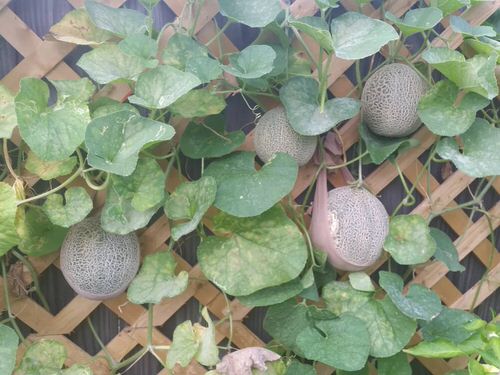
Botanical Name: Cucumis melo var. cantalupensis
A hybrid variety of muskmelon, this fruit is exceptionally juicy and sweet. Growing it is also easy as it is resistant to powdery mildew, fusarium wilt, and papaya ringspot virus.
14. Swiss Cheese Plant Fruit
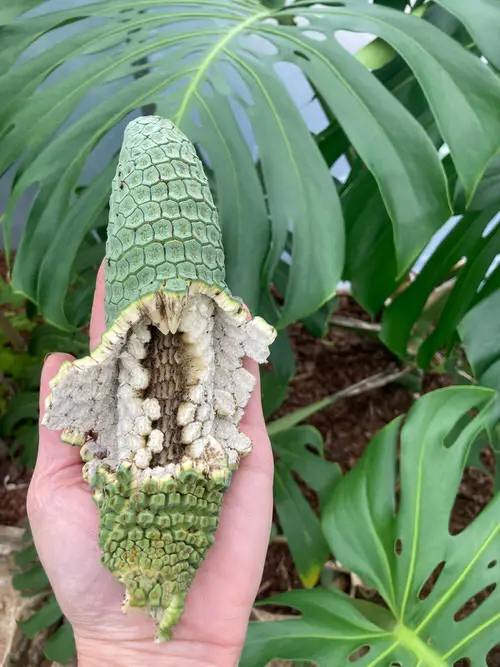
Botanical Name: Monstera deliciosa
Don’t be surprised to see the name of this climbing houseplant here; it produces tasty fruit that you can relish after it ripens fully!
Avoid eating the unripe ones as they can irritate the mouth due to the calcium oxalate crystals. You can learn more about growing this fruit in our post.
15. Chocolate Vine
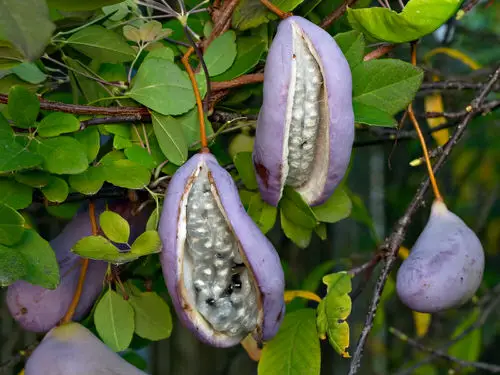
Botanical Name: Akebia quinata
Not only does this vine look beautiful, but it also grows delicious fruits. Its pulp has a mild taste, and you can relish it with lemon juice. The fruits can also be pureed and used in desserts and cocktails.


